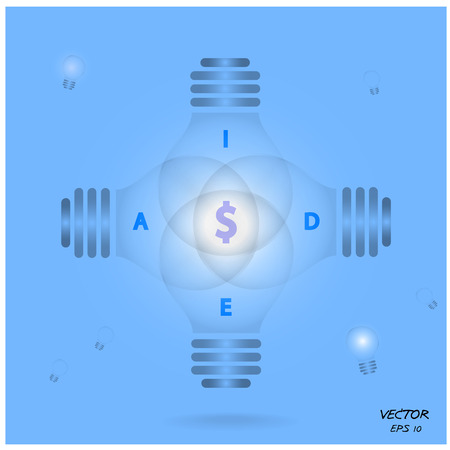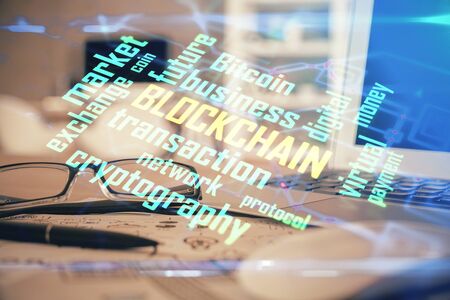1. The Digital Transformation of Art Collecting
The art world is undergoing a significant transformation as technology reshapes the way art is created, bought, and sold. Traditional galleries and auction houses are no longer the sole gatekeepers of the art market. Instead, digital platforms, blockchain technology, and artificial intelligence (AI) are revolutionizing how collectors engage with artworks.
How Technology Is Changing Art Collecting
From online galleries to AI-generated pieces, technological advancements are making art more accessible and diverse than ever before. Below are some key ways in which technology is transforming the art market:
(1) Online Art Marketplaces
Platforms like Artsy, Saatchi Art, and OpenSea have made it possible for collectors to browse and purchase artworks from anywhere in the world. These marketplaces provide artists with direct access to buyers, reducing reliance on traditional galleries.
(2) Blockchain and NFTs
The introduction of blockchain technology has brought transparency and security to the art world. NFTs (non-fungible tokens) allow artists to authenticate their work on a decentralized ledger, ensuring provenance and preventing forgery.
(3) AI-Generated Art
Artificial intelligence is now being used to create unique artworks. Algorithms trained on vast datasets can generate paintings, sculptures, and even music that challenge traditional notions of creativity.
The Benefits of Digital Art Collecting
The shift towards digital platforms offers numerous benefits for both artists and collectors. Here’s a comparison between traditional and digital art collecting:
| Traditional Art Collecting | Digital Art Collecting |
|---|---|
| Requires physical gallery visits | Accessible from anywhere online |
| Limited selection based on location | Global access to diverse artworks |
| Papers needed for authentication | Blockchain ensures authenticity |
| Higher costs due to intermediaries | Lower fees through direct transactions |
The Future of Art in a Digital Age
The integration of technology into the art world is still evolving. As virtual reality (VR), augmented reality (AR), and AI continue to advance, the possibilities for artists and collectors will only expand further. The future of art collecting is becoming more immersive, interactive, and inclusive than ever before.
2. Blockchain and Its Role in Art Authentication
Blockchain technology is transforming the art world by providing a secure and transparent way to authenticate artworks. By leveraging decentralized ledgers, blockchain enhances provenance tracking, reduces forgery, and increases trust among collectors, artists, and buyers.
How Blockchain Enhances Provenance Tracking
Provenance—the history of ownership and authenticity of an artwork—is crucial in the art market. Blockchain provides a tamper-proof digital ledger where each transaction related to an artwork is recorded permanently. This ensures that collectors can verify the legitimacy of an artwork before making a purchase.
(1) Immutable Records
Each artwork registered on a blockchain receives a unique digital certificate that cannot be altered or deleted. This creates a reliable and transparent record of ownership.
(2) Easy Verification
Collectors and buyers can quickly verify an artwork’s history through blockchain records, reducing the risk of purchasing forged or stolen pieces.
Reducing Forgery with Blockchain
Forgery has long been a major issue in the art industry. Blockchain helps combat this problem by providing an unchangeable record of an artwork’s origin, ensuring its authenticity.
(1) Unique Digital Fingerprints
Each piece of art can be linked to a non-fungible token (NFT) or cryptographic signature, making it nearly impossible for counterfeiters to create exact replicas.
(2) Smart Contracts for Verification
Smart contracts automatically verify transactions and confirm authenticity before finalizing a sale, preventing fraudulent activities.
Fostering Transparency in the Art Market
The traditional art market often lacks transparency regarding pricing, ownership, and transaction details. Blockchain introduces openness by providing clear and accessible data for all stakeholders.
| Traditional Art Market Challenges | How Blockchain Solves Them |
|---|---|
| Lack of provenance documentation | Permanently recorded ownership history |
| High risk of forgery | Tamper-proof authentication through NFTs |
| No standardized verification process | Smart contracts automate authentication |
| Opaque pricing structures | Transparent transaction records |
(1) Open Access to Information
The decentralized nature of blockchain allows anyone to verify an artwork’s authenticity without relying on intermediaries.
(2) Increased Trust Among Buyers and Sellers
A transparent system encourages more confidence in the art market, attracting new collectors and investors.

3. The Rise of NFTs: A New Asset Class
Non-fungible tokens (NFTs) have revolutionized the art world by introducing a new way to buy, sell, and own digital assets. Unlike traditional artwork, NFTs are unique digital certificates stored on a blockchain, verifying ownership and authenticity. This innovation has created unprecedented opportunities for both artists and investors while also bringing new challenges.
(1) How NFTs Have Disrupted Art Collecting
The introduction of NFTs has fundamentally changed how people collect art. In the past, collectors focused primarily on physical paintings, sculptures, or prints. Now, digital artists can sell their works directly to buyers without intermediaries like galleries or auction houses. This shift has led to a more democratized art market where emerging artists can gain recognition and monetize their work in ways that were previously impossible.
(1) Benefits of NFTs for Artists
- Direct Sales: Artists can sell their work directly to collectors without relying on galleries.
- Royalties: Smart contracts allow artists to earn royalties every time their NFT is resold.
- Global Exposure: Digital platforms enable artists to reach an international audience instantly.
(2) Challenges for Investors and Collectors
- Market Volatility: NFT prices can fluctuate significantly within short periods.
- Authenticity Issues: While blockchain ensures ownership, plagiarism and copyright disputes still exist.
- Regulatory Uncertainty: Governments are still determining how to regulate NFTs and digital assets.
(2) Comparing Traditional Art vs. NFTs
NFTs differ from traditional art in several key aspects, offering unique advantages while also presenting distinct risks. Below is a comparison of traditional art collecting versus NFT art collecting:
| Feature | Traditional Art | NFT Art |
|---|---|---|
| Tangibility | Physical object (painting, sculpture) | Digital asset stored on blockchain |
| Ownership Proof | Papers, certificates of authenticity | Blockchain record with smart contract |
| Resale Process | Auction houses, private sales | P2P transactions on NFT marketplaces |
| Piracy & Duplication | Easier to forge or duplicate | Permanently recorded on blockchain; harder to counterfeit |
| Accessibility | Largely limited to wealthy collectors | Diverse range of buyers due to lower entry costs |
| Market Stability | Mature market with historical value trends | Evolving market with high volatility |
(3) Future Outlook: Where Are NFTs Headed?
The future of NFTs in the art world is still unfolding. While some critics argue that the market is driven by speculation, others see long-term potential in blockchain-based ownership models. Innovations such as fractionalized ownership (allowing multiple people to co-own an artwork) and integration with virtual reality could further expand the possibilities for digital art collection. However, regulatory developments and evolving technology will play crucial roles in shaping the industrys trajectory.
4. The Challenges of Digital Ownership
As technology continues to revolutionize art collecting, digital ownership presents unique challenges. While blockchain provides a way to verify authenticity and provenance, concerns around copyright, replication, and longevity remain significant.
Copyright Issues in Digital Art
One of the biggest concerns in digital art ownership is copyright protection. Unlike traditional artworks that exist as physical pieces, digital art can be easily copied and shared without permission. This raises questions about the rights of artists and collectors.
(1) Ownership vs. Usage Rights
Purchasing an NFT or digital artwork doesn’t always mean owning full rights to the piece. In many cases, buyers receive a certificate of ownership but not the intellectual property rights.
| Ownership Type | Description |
|---|---|
| NFT Ownership | The buyer owns a unique digital token proving authenticity. |
| Copyright Ownership | The artist retains creative rights unless explicitly transferred. |
| Usage Rights | The owner may display or resell the piece but not reproduce it for commercial purposes. |
The Issue of Replication and Forgery
Since digital files can be duplicated infinitely without degradation, preventing unauthorized copies remains a challenge. Blockchain helps verify authenticity, but counterfeit versions can still circulate online.
(2) How Blockchain Helps Prevent Fraud
- Each transaction is recorded on an immutable ledger, verifying provenance.
- Smart contracts ensure royalties are paid to original artists upon resale.
- Collectors can trace ownership history to confirm legitimacy.
The Longevity of Digital Art Assets
The preservation of digital art also presents concerns. Unlike physical paintings that can last centuries with proper care, digital files depend on technological infrastructure that may become obsolete.
(3) Risks to Digital Art Longevity
- File formats may become outdated over time.
- NFT marketplaces or hosting platforms could shut down.
- Lack of standardized archival methods for long-term storage.
(1) Strategies for Ensuring Long-Term Preservation
- Diversify storage solutions using decentralized networks and offline backups.
- Select open-source file formats that are more likely to remain accessible.
- Create redundancy by storing multiple copies across different platforms.
The future of digital art collecting relies on addressing these challenges through technological advancements and legal frameworks. As solutions evolve, both artists and collectors must stay informed to protect their assets effectively.
5. Beyond Blockchain: What’s Next for Art and Tech?
While blockchain has already made a significant impact on the art world, emerging technologies like Artificial Intelligence (AI), Augmented Reality (AR), and Virtual Reality (VR) are pushing the boundaries even further. These innovations are not only transforming how art is created but also redefining how collectors and audiences experience it.
AI-Generated Art: A New Era of Creativity
AI has revolutionized the way artists create, offering tools that assist in generating unique pieces, predicting trends, and even collaborating with human creators. AI-powered programs can analyze vast amounts of data to generate artwork that blends creativity with machine intelligence.
(1) AI as a Creative Partner
Artists are increasingly using AI to co-create art. Machine learning algorithms can analyze existing styles and generate new compositions that push creative boundaries.
(2) The Role of AI in Art Valuation
AI is also being used to assess the authenticity and value of artworks by analyzing patterns, brushstrokes, and historical data.
Augmented Reality: Bringing Art to Life
AR technology is enhancing the way people interact with art by overlaying digital elements onto physical spaces. This allows collectors, galleries, and museums to offer immersive experiences without altering the physical artwork itself.
(1) Virtual Galleries and Exhibitions
AR enables art lovers to explore virtual galleries from anywhere in the world, making exhibitions more accessible.
(2) Interactive Art Experiences
Through AR apps, users can point their smartphones at a painting and see animations, additional content, or artist insights appear in real-time.
Virtual Reality: Immersive Art Engagement
VR takes things a step further by allowing users to enter fully immersive environments where they can engage with digital art on an entirely new level.
| Technology | Main Impact on Art Collecting |
|---|---|
| AI | Generates unique artwork and assists in valuation |
| AR | Makes exhibitions interactive and globally accessible |
| VR | Creates immersive digital art experiences |
(1) VR Art Galleries
Museums and galleries are developing VR spaces where visitors can walk through exhibits virtually, no matter where they are located.
(2) Digital-Only Art Installations
The rise of VR-based creations means artists can design works that exist solely in digital environments, offering new possibilities for collectors.


